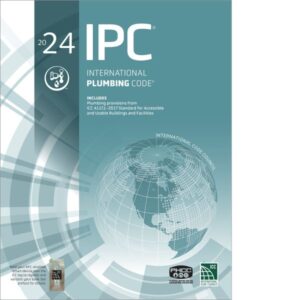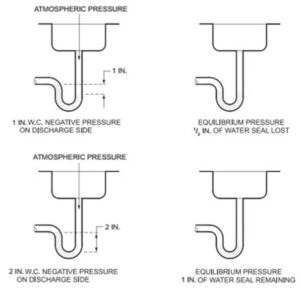
Code Corner: 2024 International Plumbing Code Chapter 9: Vents
The Code Corner, explores sections of the I-Codes each month, focusing on key elements of these essential codes. This month, we’re spotlighting the scope of Chapter 9 of the 2024 International Plumbing Code® (IPC): Vents.
The International Codes® (I-Codes), developed by the International Code Council, are a family of fifteen coordinated, modern building safety codes that help ensure the design and construction of safe, sustainable and affordable structures.
The I-Codes are the most widely adopted set of model codes globally, implemented in all 50 U.S. states and many countries around the world.
The Building Safety Journal’s series, Code Corner, explores sections of the I-Codes each month, focusing on key elements of these essential codes. This month, we’re spotlighting the scope of Chapter 9 of the 2024 International Plumbing Code® (IPC): Vents.

International Plumbing Code 901.2 Trap Seal Protection
The plumbing system shall be provided with a system of vent piping that will permit the admission or emission of air so that the seal of any fixture trap shall not be subjected to a pressure differential of more than 1 inch of water column (249 Pa).
Protection of the trap seal means that during the normal operation of the plumbing system, the water seal remains in the trap. Each trap has a minimum 2-inch (51 mm) trap seal depth translating to a hydrostatic pressure equal to a 2-inch water column (498 Pa).
If exposed to a 1-inch water column (249 Pa) pressure differential, a 1-inch (25 mm) water seal remains in the trap. The vent methods identified in this chapter are intended to limit the air pressure differential at trap seals to 1 inch of water column (249 Pa) or less (see commentary, Sections 1002 through 1002.5).
Air pressure fluctuations downstream of the trap caused by certain flow conditions can occur. High positive pressures could force the trap seal back into the fixture, possibly resulting in water spilling onto the floor from fixtures such as floor drains. This will also result in drainage system odors being pushed through the trap seal. For example, bubbles rising through the trap seal of a water closet are an indication of excessive positive pressure on the drainage side of the trap.
When a trap seal is exposed to a lower pressure on the drainage side of the trap, the water seal will rise and flow over the trap weir and into the drainage system. This will result in a complete or partial loss of the trap water seal. The lower pressure on the drainage side of the trap (also called “negative pressure” or “partial vacuum”) causes loss of trap seal that is proportional to the amount of negative pressure. Such a pressure differential must never exceed 1 inch of water column (249 Pa) [see Commentary Figures 901.2(1) and 901.2(2)].

Section 1002.4 contains additional provisions to protect a trap seal that is subject to loss by evaporation, which might occur where trap seals do not regularly receive waste.
To learn more about the Code Council’s IPC, click here. To stay updated on the latest PMG industry news, subscribe to the Code Council’s PMG newsletter here.






